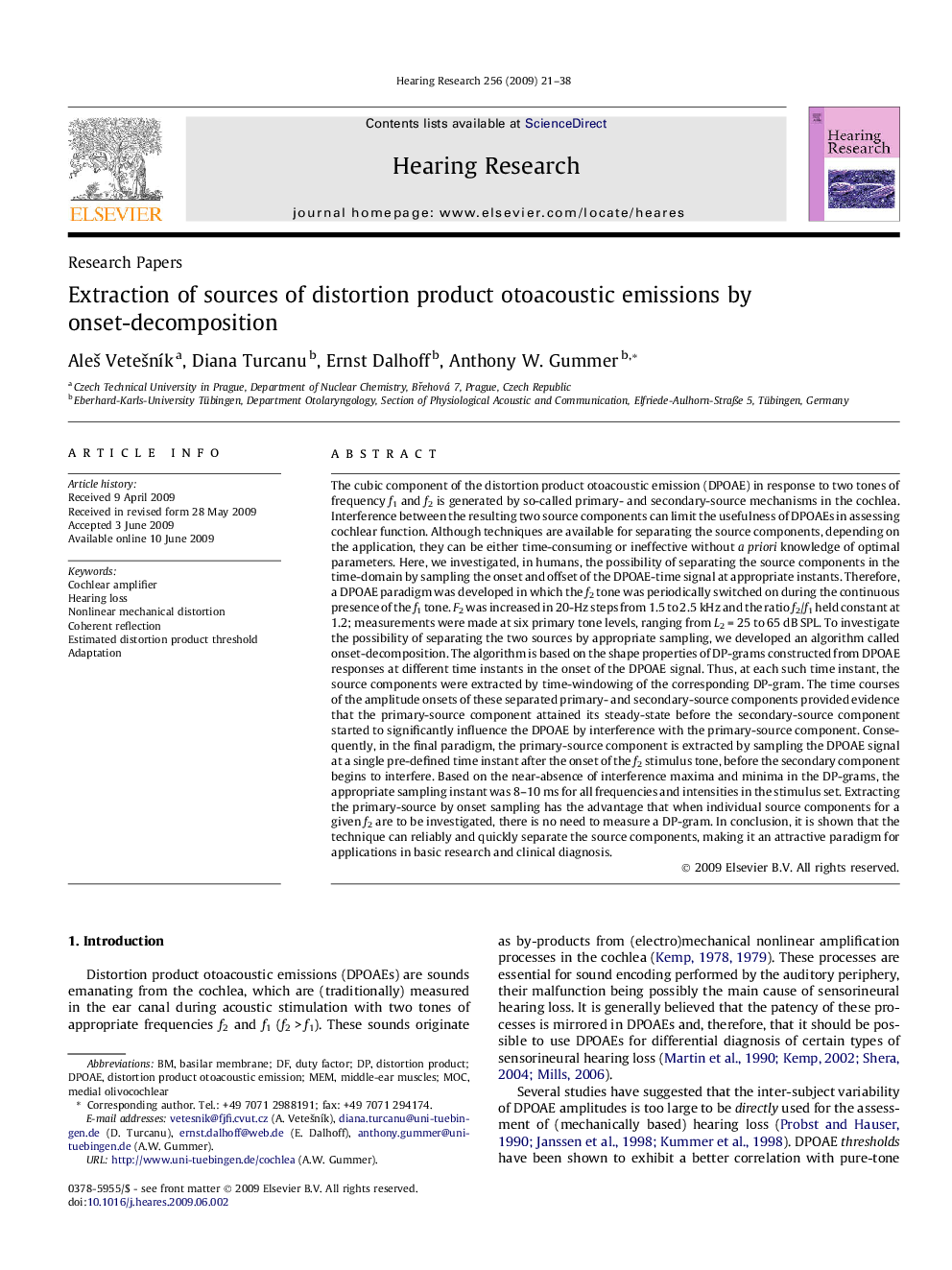| کد مقاله | کد نشریه | سال انتشار | مقاله انگلیسی | نسخه تمام متن |
|---|---|---|---|---|
| 4355917 | 1615644 | 2009 | 18 صفحه PDF | دانلود رایگان |
عنوان انگلیسی مقاله ISI
Extraction of sources of distortion product otoacoustic emissions by onset-decomposition
دانلود مقاله + سفارش ترجمه
دانلود مقاله ISI انگلیسی
رایگان برای ایرانیان
کلمات کلیدی
DPOAEMOCmedial olivocochlear - mediv olivocochlearHearing loss - از دست دادن شنواییdistortion product otoacoustic emission - انتشار محصولات octo آکوستیک محصول اعوجاجCochlear amplifier - تقویت کننده CochlearAdaptation - سازگاری(زیست شناسی)basilar membrane - غشاء basilarDuty factor - فاکتور وظیفهMEM - مامانDistortion product - محصول تحریف
موضوعات مرتبط
علوم زیستی و بیوفناوری
علم عصب شناسی
سیستم های حسی
پیش نمایش صفحه اول مقاله

چکیده انگلیسی
The cubic component of the distortion product otoacoustic emission (DPOAE) in response to two tones of frequency f1 and f2 is generated by so-called primary- and secondary-source mechanisms in the cochlea. Interference between the resulting two source components can limit the usefulness of DPOAEs in assessing cochlear function. Although techniques are available for separating the source components, depending on the application, they can be either time-consuming or ineffective without a priori knowledge of optimal parameters. Here, we investigated, in humans, the possibility of separating the source components in the time-domain by sampling the onset and offset of the DPOAE-time signal at appropriate instants. Therefore, a DPOAE paradigm was developed in which the f2 tone was periodically switched on during the continuous presence of the f1 tone. F2 was increased in 20-Hz steps from 1.5 to 2.5Â kHz and the ratio f2/f1 held constant at 1.2; measurements were made at six primary tone levels, ranging from L2Â =Â 25 to 65Â dB SPL. To investigate the possibility of separating the two sources by appropriate sampling, we developed an algorithm called onset-decomposition. The algorithm is based on the shape properties of DP-grams constructed from DPOAE responses at different time instants in the onset of the DPOAE signal. Thus, at each such time instant, the source components were extracted by time-windowing of the corresponding DP-gram. The time courses of the amplitude onsets of these separated primary- and secondary-source components provided evidence that the primary-source component attained its steady-state before the secondary-source component started to significantly influence the DPOAE by interference with the primary-source component. Consequently, in the final paradigm, the primary-source component is extracted by sampling the DPOAE signal at a single pre-defined time instant after the onset of the f2 stimulus tone, before the secondary component begins to interfere. Based on the near-absence of interference maxima and minima in the DP-grams, the appropriate sampling instant was 8-10Â ms for all frequencies and intensities in the stimulus set. Extracting the primary-source by onset sampling has the advantage that when individual source components for a given f2 are to be investigated, there is no need to measure a DP-gram. In conclusion, it is shown that the technique can reliably and quickly separate the source components, making it an attractive paradigm for applications in basic research and clinical diagnosis.
ناشر
Database: Elsevier - ScienceDirect (ساینس دایرکت)
Journal: Hearing Research - Volume 256, Issues 1â2, October 2009, Pages 21-38
Journal: Hearing Research - Volume 256, Issues 1â2, October 2009, Pages 21-38
نویسندگان
AleÅ¡ VeteÅ¡nÃk, Diana Turcanu, Ernst Dalhoff, Anthony W. Gummer,